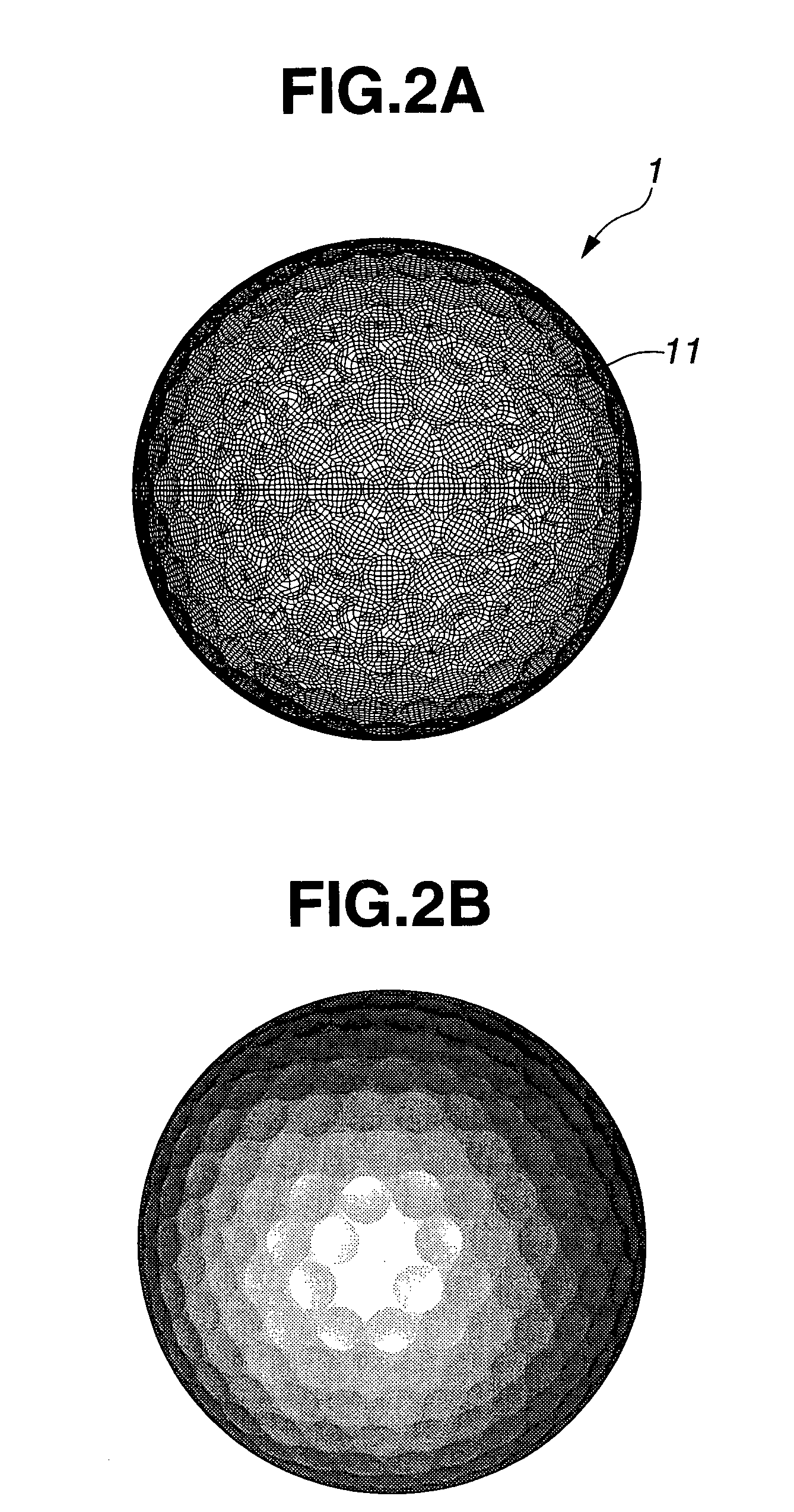Ballistic trajectory simulation method and flight simulation method for golf ball
a golf ball and trajectory simulation technology, applied in the field of ballistic trajectory simulation methods, can solve the problems of golf ball design new based on the actual model, high cost, and long time and cost,
- Summary
- Abstract
- Description
- Claims
- Application Information
AI Technical Summary
Benefits of technology
Problems solved by technology
Method used
Image
Examples
Embodiment Construction
[0033]In the following, the present invention is described in more detail with reference to the accompanying drawings.
[0034]The ballistic trajectory simulation method of the present invention analyzes a ballistic trajectory of a golf ball having a plurality of dimples formed on the surface thereof when the golf ball is hit to fly making use of arithmetic operation by a computer.
[0035]In the ballistic trajectory simulation method of the present invention, at first, (A) a golf ball model of a substantially spherical shape having a plurality of dimples formed on the surface thereof and an air current virtual region which surrounds the golf ball model are set in a virtual space set by the computer.
[0036]The setting by the computer is illustrated in FIGS. 1A and 1B.
[0037]FIG. 1A is a conceptive perspective view illustrating an example of a state wherein the golf ball model and the air current virtual region are set in a virtual space; FIG. 1B is a transverse sectional view along a plane ...
PUM
 Login to View More
Login to View More Abstract
Description
Claims
Application Information
 Login to View More
Login to View More - R&D
- Intellectual Property
- Life Sciences
- Materials
- Tech Scout
- Unparalleled Data Quality
- Higher Quality Content
- 60% Fewer Hallucinations
Browse by: Latest US Patents, China's latest patents, Technical Efficacy Thesaurus, Application Domain, Technology Topic, Popular Technical Reports.
© 2025 PatSnap. All rights reserved.Legal|Privacy policy|Modern Slavery Act Transparency Statement|Sitemap|About US| Contact US: help@patsnap.com



